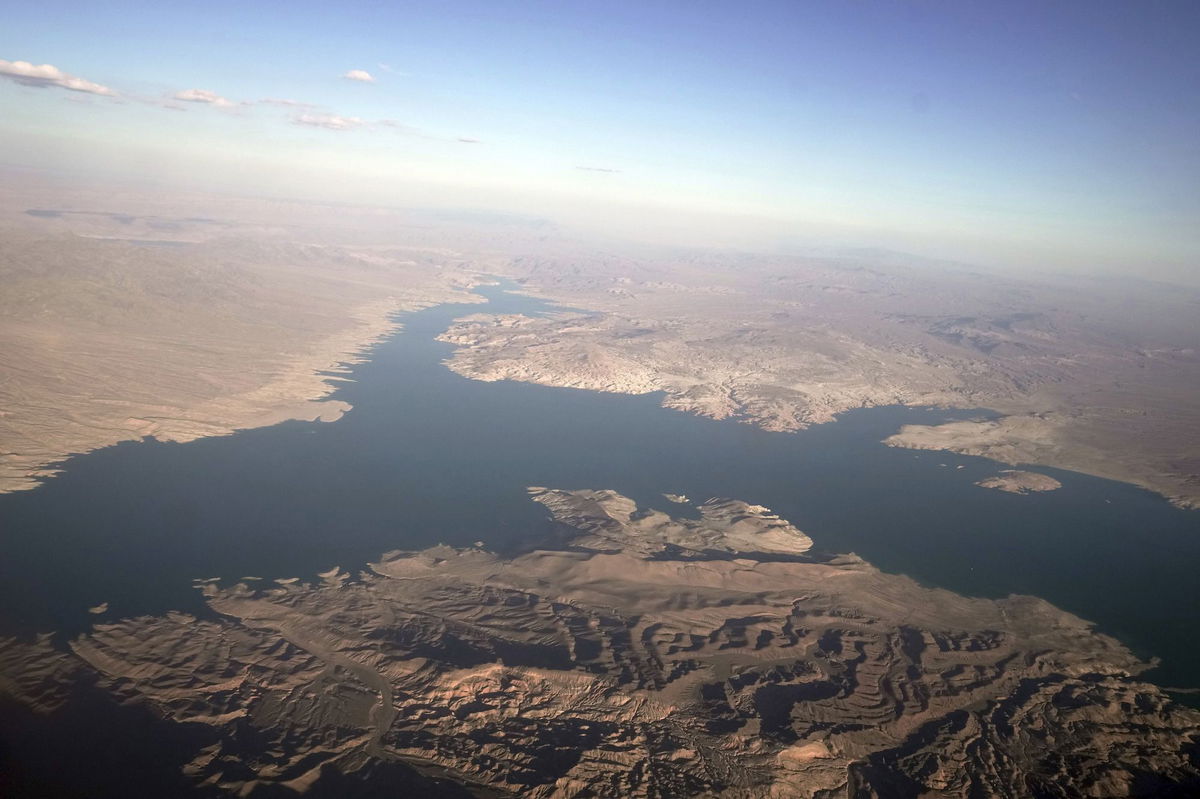Feds ease water cuts on Colorado River after blockbuster winter

Originally Published: 15 AUG 23 14:15 ET Updated: 15 AUG 23 14:20 ET By Ella Nilsen, CNN
(CNN) — Federal officials are easing water restrictions on the Colorado River next year, an incredible improvement after above-average winter snowpack helped shore up plummeting water levels at the nation’s two largest reservoirs.
The US Bureau of Reclamation on Tuesday announced Lake Mead and the Lower Colorado River will operate in a Tier 1 water shortage in 2024, effecting water cuts in Arizona, Nevada and Mexico.
While it’s a vast improvement over this year’s first-ever Tier 2 shortage, and will give back billions of gallons of Colorado River water to those states, it illustrates the impact of the Southwest’s stubborn drought and the effect the climate crisis is having on the region’s water resources.
“A Tier 1 shortage is still very much a shortage,” Brenda Burman, general manager of the Central Arizona Project and former Bureau of Reclamation commissioner, told CNN.
Burman oversees the water supply for Phoenix, which has taken the brunt of the water cuts for the past two years. Arizona would have to forgo around 18% of its supply in the Tier 1 shortage, down from 21% this year. But officials with the Arizona Department of Water Resources said they would not be using that extra water next year to help keep water levels stable in Lake Mead.
Still, Burman said, the improvement demonstrates “a wet year can be very helpful.”
In addition to the tier-system cuts, California, Arizona and Nevada came to a historic agreement earlier this year on how to voluntarily slash water usage in exchange for federal funding. The Bureau of Reclamation announced Tuesday those efforts mean Lake Mead’s downstream water release this year will be the lowest in three decades, keeping 1.5 million acre-feet of water in the reservoir – roughly the amount of annual water usage scientists say should be cut to maintain the Colorado River.
Federal officials said Lake Mead has shown “significant improvement” because of the good winter and the Southwest’s water conservation efforts, which have been “funded in part by President Biden’s historic Investing in America agenda.”
Read more: Phoenix’s record-breaking summer just hit another terrible milestone
But bureau commissioner Camille Calimlim Touton said in a statement the region’s prolonged drought, which is exacerbated by climate change, has prompted the feds and states to reconsider how to manage the Colorado River going forward.
“The above-average precipitation this year was a welcome relief, and coupled with our hard work for system conservation, we have the time to focus on the long-term sustainability solutions needed in the Colorado River Basin,” Touton said. “However, Lake Powell and Lake Mead – the two largest reservoirs in the United States and the two largest storage units in the Colorado River system – remain at historically low levels.”
Federal officials are projecting Mead and Powell likely won’t fall below critical levels for the next two years, giving officials time to negotiate how the river should be divided between the seven states that rely on it after the current interstate agreement expires in 2026.
The Colorado River’s remarkable improvement this year can mostly be credited to last year’s phenomenal winter, which raised depleted reservoirs across the West and reversed the freefall at Lakes Mead and Powell. Lake Mead, for instance, is around 20 feet higher now than it was in August 2022.
Last winter was a “gamechanger for us in the short term,” said Bill Hasencamp, the manager of Colorado River Resources for the Metropolitan Water District of Southern California, which provides water to Los Angeles. “Another dry year would have been really bad for Southern California.”
Even if this coming winter is dry, the surplus is so much that it will pad the water savings accounts of each state, Hasencamp said. For instance, his water district has been able to rely much more on water from California’s state water project, meaning it can leave far more of its allocated Colorado River water in Lake Mead.
“One wet year is enough to offset two to three dry years,” Hasencamp said. States are also already focused on cutting back their yearly water usage as part of negotiations with the federal government; California is starting to implement a plan to cut 400,000 acre-feet of water annually for the next four years.
“That’s a much more planned, implementable reduction rather than having to cut back in a reactive way,” Hasencamp said.
Officials at Reclamation are still negotiating contracts with large water users on the river to cut back their use in exchange for federal dollars passed in the Inflation Reduction Act. And states and individual water districts are also submitting applications for additional funding to support long-term projects including drip irrigation, ripping out water-intensive grass from cities, or investing in desalination plants to make ocean water or brackish water drinkable.
The federal government isn’t expected to make awards on those projects until at least the end of the year.
Federal officials including Deputy Secretary of the Interior Tommy Beaudreau and US Bureau of Reclamation Commissioner Camille Calimlim Touton recently convened a meeting with officials from all seven basin states and the 30 Colorado River Basin Tribal Nations.
There will be a lot of focus on keeping all seven basin states unified going forward, Hasencamp said.
“It’s not easy, there’s difference of viewpoints, but I think we’ll get there,” Hasencamp said. “We need to get there.”
The-CNN-Wire
™ & © 2023 Cable News Network, Inc., a Warner Bros. Discovery Company. All rights reserved.
